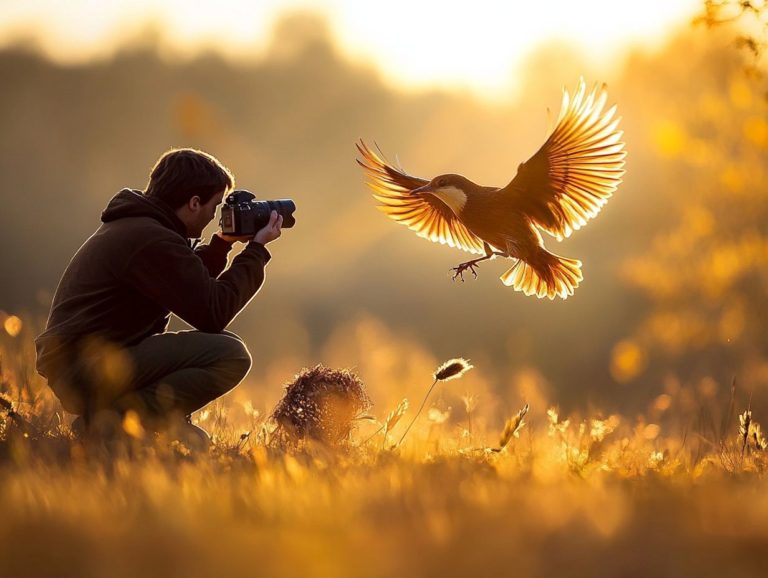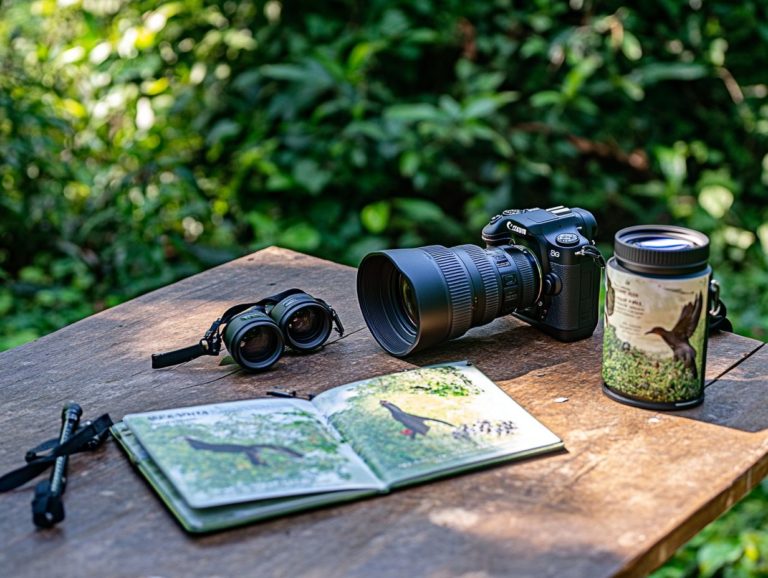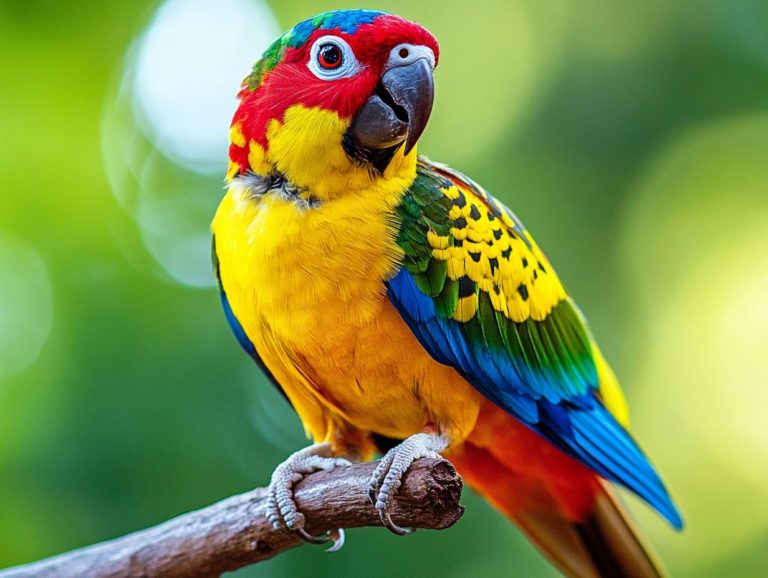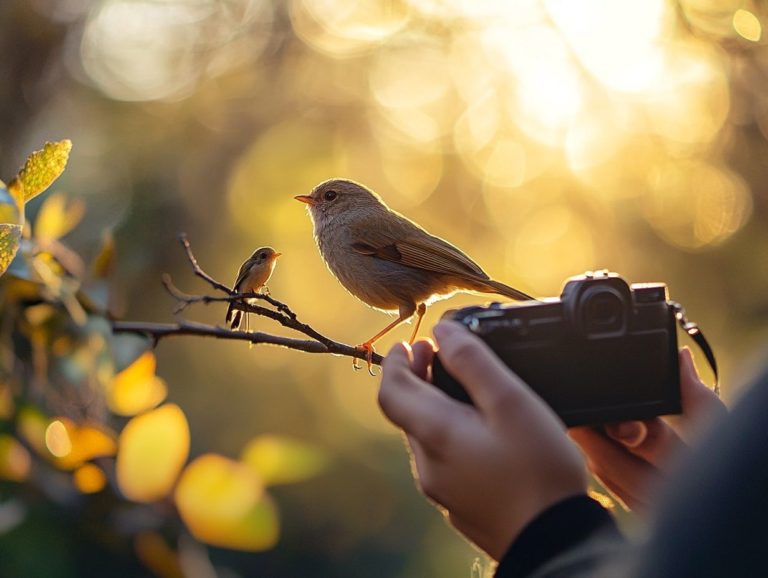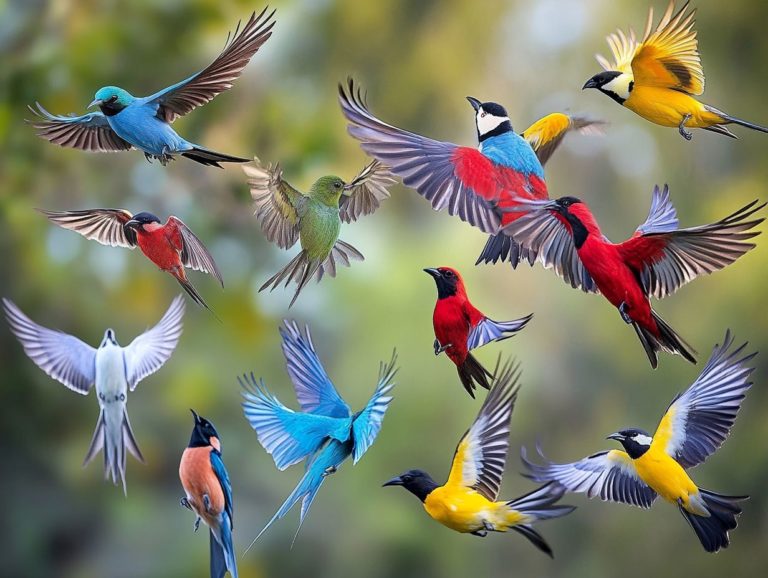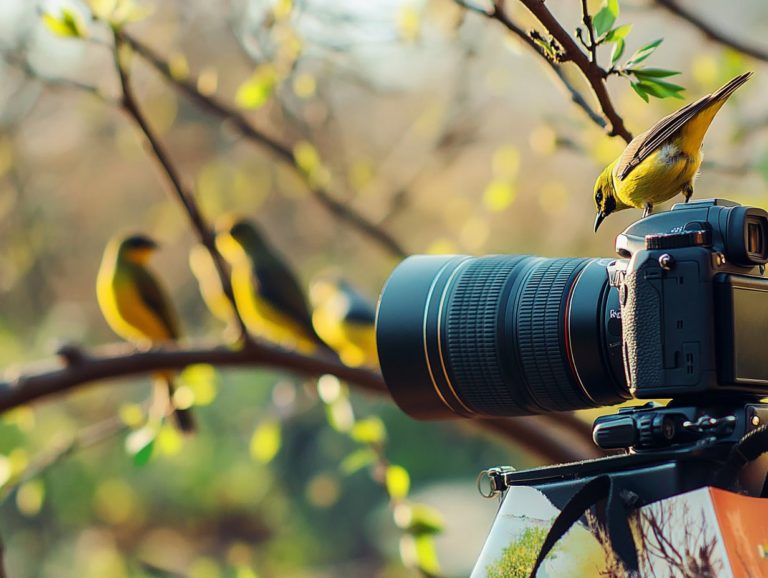How to Use Natural Framing in Bird Photography
Bird photography is captivating. However, capturing that perfect shot requires patience and good composition skills.
One impactful technique to elevate your images is natural framing. This approach enhances your composition, boosts the visual appeal of your photographs, and utilizes the rule of thirds to create balance. Discover how to identify potential frames in your surroundings, turning ordinary scenes into extraordinary captures.
Discover practical techniques and tips to master this skill, ensuring that your bird photos truly stand out in both portrait and landscape formats. Immerse yourself in the art of natural framing and watch as your photography transforms!
Contents
- Key Takeaways:
- Understanding Natural Framing in Bird Photography
- Benefits of Using Natural Framing
- Identifying Potential Natural Frames
- Techniques for Using Natural Framing
- Tips for Capturing the Perfect Shot
- Frequently Asked Questions
- What is natural framing in bird photography?
- Why should I use natural framing in my bird photography?
- How do I find natural framing elements in the environment?
- What techniques can I use to incorporate natural framing in my bird photography?
- Do I need expensive equipment to use natural framing in bird photography?
- Are there any tips for using natural framing in bird photography?
Key Takeaways:

- Utilize natural elements such as branches, leaves, and rocks to frame your bird subjects for a visually pleasing composition.
- Using natural framing in bird photography can enhance the overall composition and add visual interest to your images.
- Take your time to identify potential natural frames and experiment with different techniques to capture the perfect shot of your feathered subjects.
Understanding Natural Framing in Bird Photography
Natural framing in bird photography invites you to harness the elements of the environment to craft a visually stunning frame around your subject. This technique enhances your composition and draws the viewer’s eye directly to your photograph’s subject, making understanding the basics of bird photography composition essential for every photographer.
It not only adds depth to your image but also highlights the subject s beauty within its natural habitat. This creates a harmonious balance between foreground and background elements while considering lines in the image that guide the viewer’s eye.
By mastering how various components interact within your frame, you can capture the beauty and emotions of bird behavior. The result is photographs that are not just impactful but truly unforgettable, showcasing the dynamics of bird behavior.
What is Natural Framing?
Natural framing involves using elements like trees, branches, or rocks to create a visual frame around your main subject in photography. This technique enhances your composition and skillfully guides the viewer’s eye.
Its significance lies in the fact that it highlights your subject and adds depth and context to the overall image, enhancing the emotional impact of your shots.
By incorporating these natural elements, you create a sense of depth that draws viewers into the scene, offering a more immersive experience and enriching the overall dynamics of your photograph.
A well-executed natural frame has the power to elevate an ordinary snapshot into a compelling image, sparking curiosity and evoking emotions.
This approach brings your story to life and captures attention! It organizes your visual narrative effectively, allowing for a more dynamic interpretation of the landscape while enhancing the storytelling aspect of your photography. It contributes to a balanced and harmonious aesthetic that truly captivates your audience.
Benefits of Using Natural Framing
The advantages of utilizing natural framing in bird photography are numerous, as it greatly elevates both composition and visual allure, adhering to the guidelines for beginners in this art form.
This technique directs the viewer s gaze to the subject while simultaneously offering context within its surroundings. By incorporating elements like trees, leaves, or other natural structures as frames, you create a more immersive experience that encapsulates the essence of the bird’s habitat, adding depth and intrigue to your images.
This approach champions simplicity and aligns with the essential principles of effective composition. It ensures that each shot resonates with emotion and captivates the viewer’s attention through thoughtful framing techniques.
Explore these techniques and unleash your creativity in bird photography. Try out natural framing today and see your images come to life!
Enhancing Composition and Visual Appeal
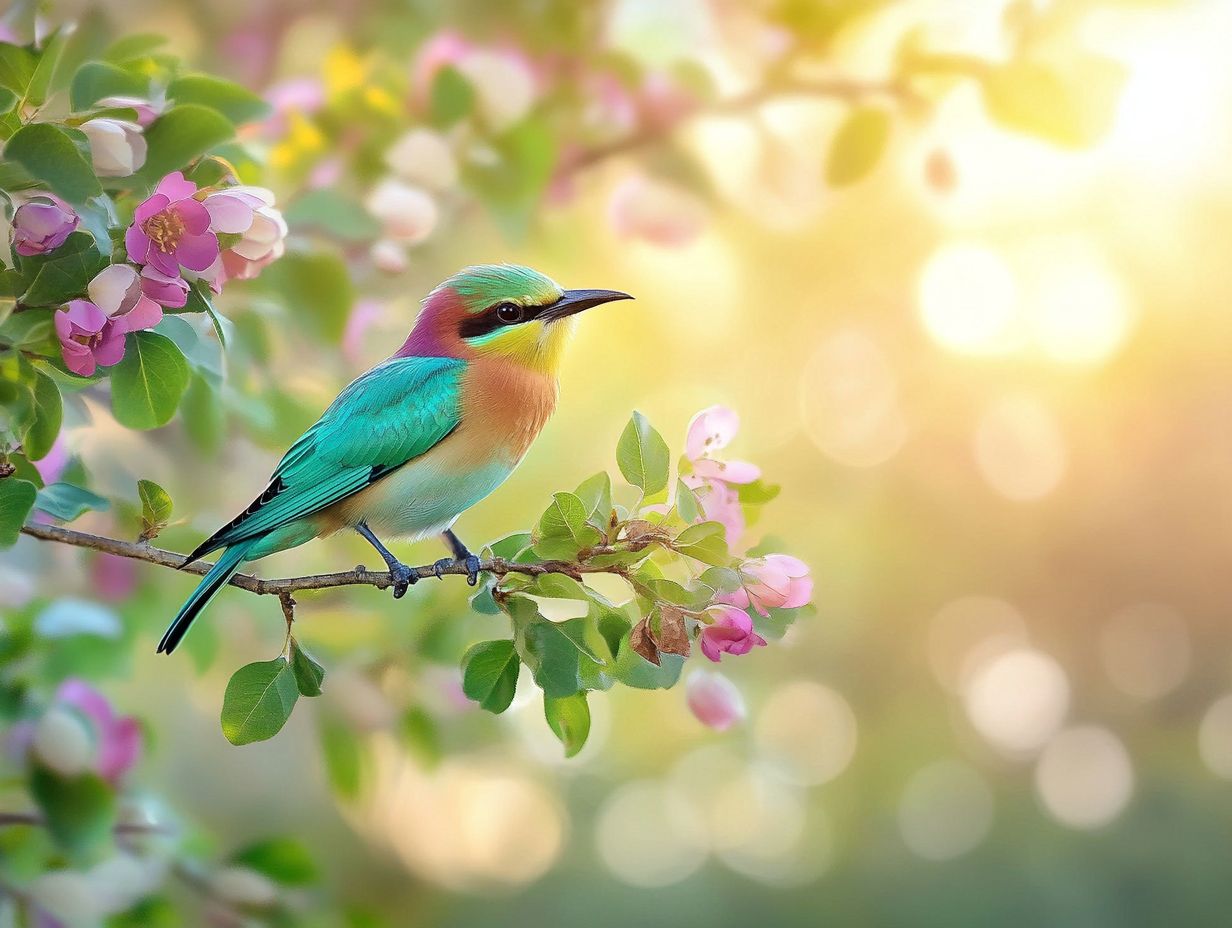
Natural framing enhances the composition and visual appeal of your bird photographs. It can elevate your images from ordinary to extraordinary by incorporating elements from the environment.
Use features like branches and leaves to create a frame around your subject. This technique directs the viewer’s eye straight to the bird while considering the dynamics of your shot.
Visual lines, like those from paths or rivers, guide the observer s gaze toward the focal point. This enhances allure while infusing context and storytelling into your photograph, enriching the viewer’s experience. Overall, this approach allows your work to resonate on a deeper level.
Identifying Potential Natural Frames
Identifying potential natural frames is a crucial skill for you as a bird photographer. It enhances your awareness of the environment around you.
This skill involves recognizing elements in your environment that can elevate your composition and effectively showcase your subject. It enhances both the aesthetics and emotional impact of your photographs.
This process demands a keen awareness of your surroundings, allowing you to spot opportunities in branches, foliage, and other natural features that can serve as frames. The placement of these elements can profoundly influence the dynamics of your photograph.
Guiding the viewer’s eye toward the bird enriches the image both aesthetically and emotionally, creating engaging visual elements that resonate.
Elements of a Good Natural Frame
In terms of bird photography, consider incorporating elements that create a natural frame items that provide context, structure, and balance. This ensures effective subject placement in your shot.
These elements draw the viewer’s eye toward your subject while producing a harmonious composition. This enriches the overall narrative of your photograph.
Think about key components like trees, branches, or flowers; they can serve as framing elements that enhance the aesthetic appeal and establish a sense of environment.
By incorporating diverse shapes like soft leaves and angular twigs, you create a dynamic visual narrative that adds interest and impact to your photographs. Vibrant colors can amplify your subject s presence, offering a striking contrast against muted background tones, enhancing the overall perception of depth in your image.
Textures, whether smooth or rough, add depth to your images, enriching the overall ambiance and guiding the observer s focus to the captivating avian subject. Together, these elements work cohesively to craft an engaging and comprehensive visual story that resonates with viewers on a deeper level.
Techniques for Using Natural Framing
Utilizing techniques for natural framing in bird photography requires a thoughtful blend of strategic positioning and precise camera settings. To enhance your skills, learn how to use natural light in bird photography, achieving the desired composition and emotional resonance in your images, allowing for impactful storytelling.
Stay alert to your environment and look for ways to frame your subject with surrounding elements be it foliage, rocks, or even the play of light. This enhances the viewer’s awareness of the scene.
By mastering these techniques, you can create images that are not only visually captivating but also tell a richer story about the bird s habitat and behavior. This ultimately deepens the viewer’s experience and connection to the photograph through effective subject placement.
Positioning and Adjusting Settings
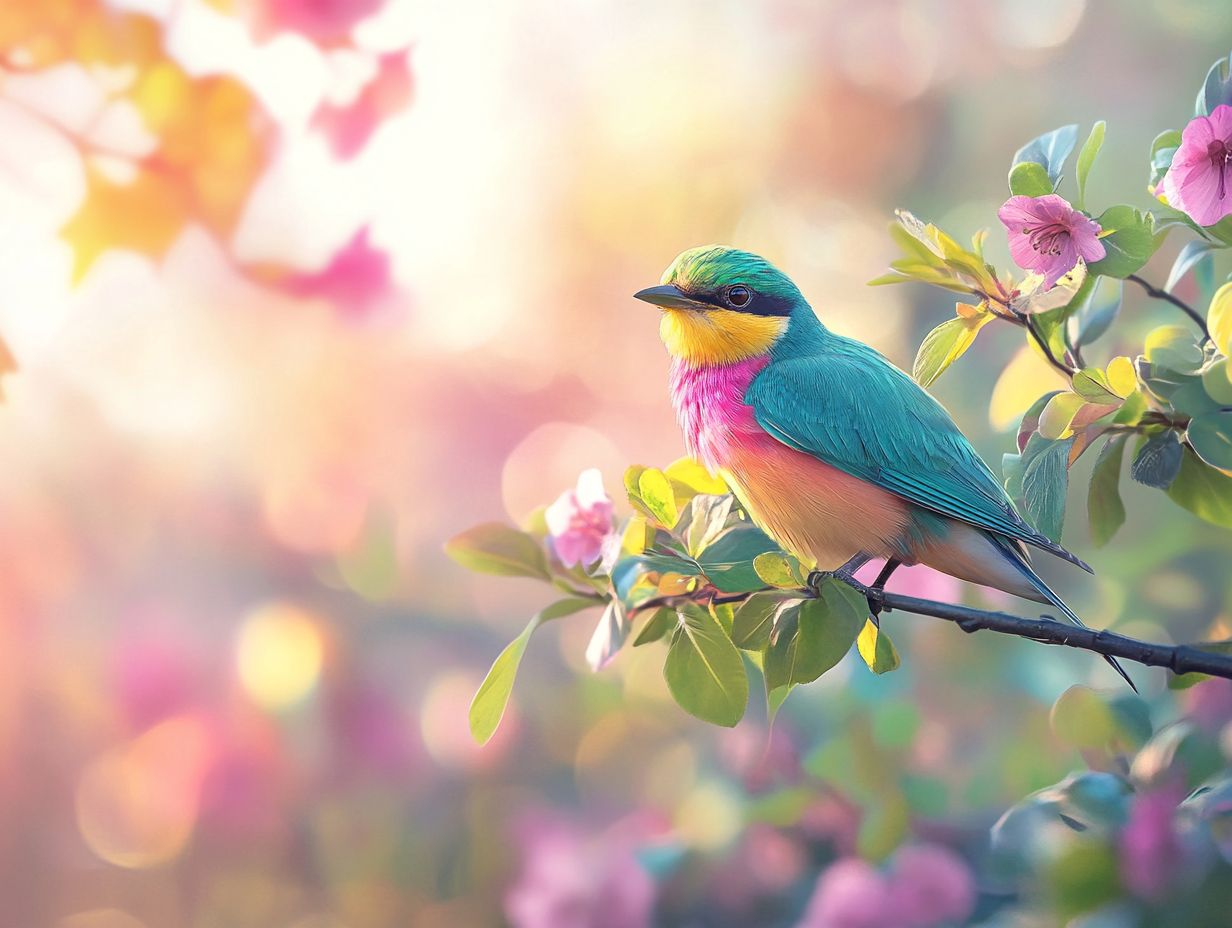
Positioning and fine-tuning your settings are essential steps in harnessing the art of natural framing in bird photography. Choose your angles wisely to capture stunning shots!
By thoughtfully engaging with your surroundings, you can create harmonious compositions that draw viewers into the story behind the image. Focus on the interplay of foreground and background to enhance your framing.
This careful approach to framing becomes even more impactful when paired with optimal camera settings, such as adjusting the aperture (the opening in the lens that controls light) and shutter speed (how long the camera s sensor is exposed to light). These settings play a crucial role in determining the photograph’s exposure and clarity, enhancing your shot s dynamics.
Ensure your focus is sharp on the bird while allowing the background to gently blur. This technique highlights the intricate details of your subject and creates a sense of depth, drawing viewers into the environment.
By manipulating light and shadow through these adjustments, you enhance not just the visual appeal but also the emotional resonance of the image, making it connect more deeply with your audience.
Tips for Capturing the Perfect Shot
Capturing the perfect shot in bird photography demands impeccable timing and refined techniques. A strong grasp of composition can elevate your images and effectively capture the dynamics of the scene.
You must be ready to seize fleeting moments when birds display captivating behaviors or striking poses, framed beautifully by their surroundings. This enhances the emotional impact of your photograph.
The interplay of light, your angle of view, and the balance between foreground and background can profoundly influence your photograph s dynamics and emotional impact.
Creating a compelling visual narrative truly resonates with viewers and emphasizes effective subject isolation.
Composition and Timing
In bird photography, composition and timing are connected elements that can make or break your shot. They create an image that resonates with viewers.
By considering the framing, balance, and placement of your subject within the frame, you can elevate the visual impact of your photographs. Ensure the viewer s eye is guided toward the subject.
Understanding the behavioral patterns of birds allows you to anticipate their movements effectively. This ensures your camera is primed and ready for the perfect moment.
Using a faster shutter speed helps freeze action, while a steady hand or tripod enhances stability, especially in low-light conditions. This is crucial for capturing dynamic scenes effectively.
By harmonizing these elements, you not only capture breathtaking visuals but also weave a more compelling narrative, keeping your audience captivated and engaged.
Frequently Asked Questions
What is natural framing in bird photography?
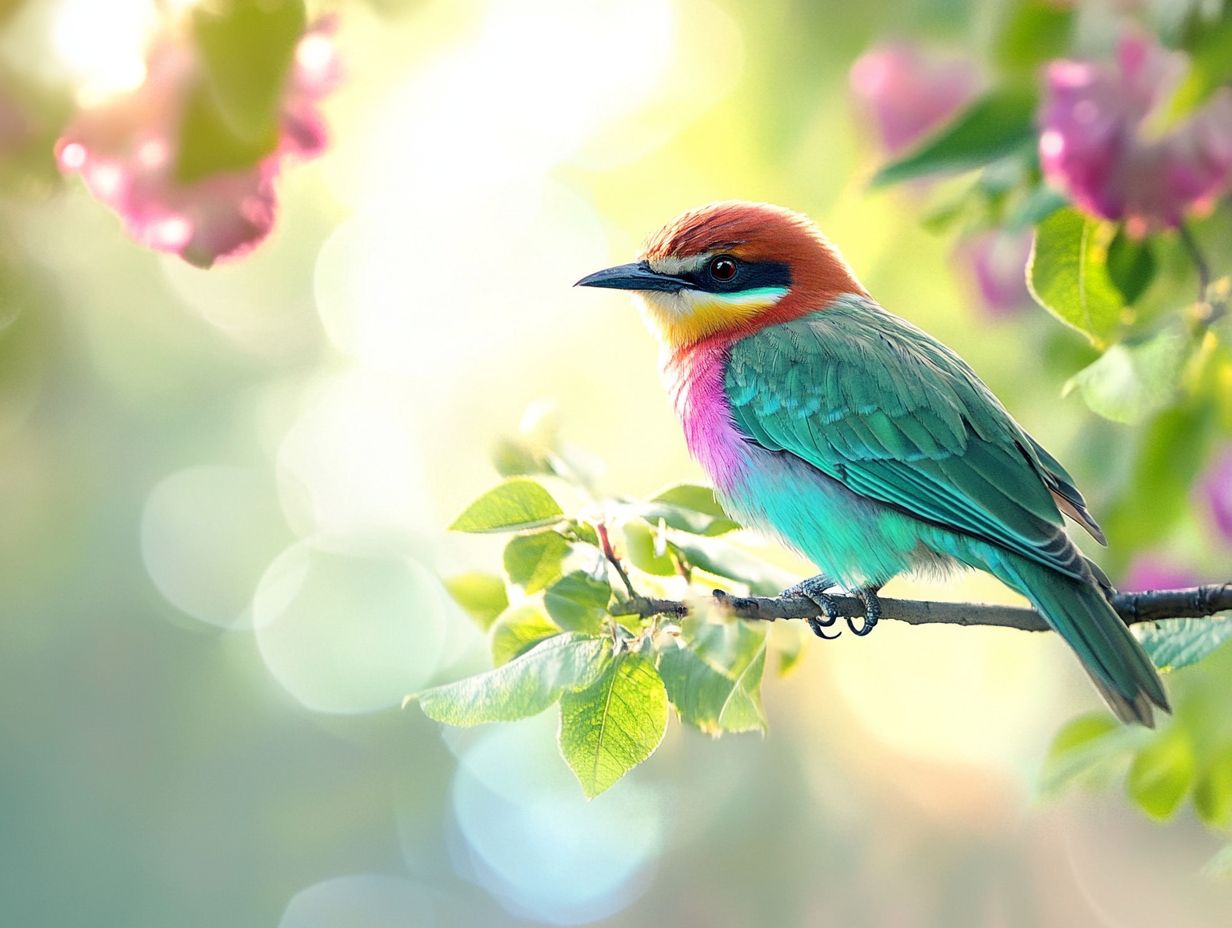
Natural framing in bird photography is the technique of using elements in the environment, like branches or leaves, to frame the bird in the photo. This adds depth and visual interest to the image.
Why should I use natural framing in my bird photography?
Natural framing enhances your bird photos by providing a more interesting composition and drawing the viewer’s eye towards the subject. It adds context and helps create a story within the photo.
How do I find natural framing elements in the environment?
Look for trees, bushes, or other plants that can act as a frame. Pay attention to the shape and size of the branches or leaves, and how they complement the bird in your photo.
What techniques can I use to incorporate natural framing in my bird photography?
One technique is to position yourself so that natural framing elements are in the foreground. You can also use a wider aperture, which is the opening in the lens that lets light in, to blur the frame slightly and make the bird stand out.
Do I need expensive equipment to use natural framing in bird photography?
No, you don t need expensive equipment. Any camera will work yes, even your smartphone! The key is having a good eye for composition and spotting the right elements in your surroundings.
Are there any tips for using natural framing in bird photography?
Absolutely! It’s crucial to ensure that natural framing enhances the bird’s beauty, not distracts from it.
Experimenting with different angles helps you find the most effective framing for your subject. Don’t wait! Grab your camera and start experimenting with natural framing today!

